From the top of the green hill lapped by the Clanio river, at 320 meters above sea level, you could enjoy a complete view of the Partenio mountains and the Monteforte Irpino pass up to the Sabato valley, the key to access the land of Puglia and the connection with the Adriatic.
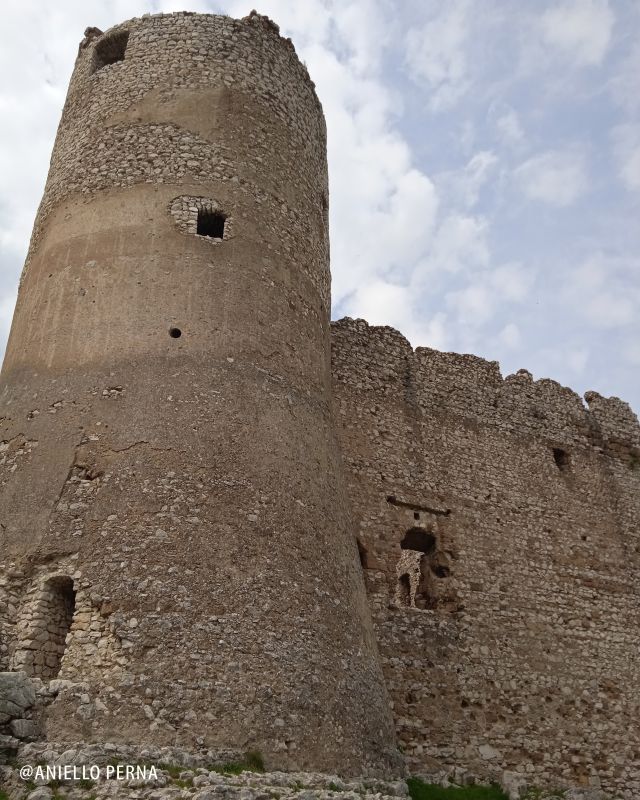 An ideal strategic position, which had motivated a small military settlement even before the Lombards built a trapezoid-shaped fortress there in the 7th century. And they defended it with a ring of walls, strengthened by ten semi-towers, to enclose an area at the top of the hill of approximately ten thousand square metres. The Lombards, devout followers of the archangel, wanted to link the fortress to the name of San Michele, who they had chosen as their patron saint.
An ideal strategic position, which had motivated a small military settlement even before the Lombards built a trapezoid-shaped fortress there in the 7th century. And they defended it with a ring of walls, strengthened by ten semi-towers, to enclose an area at the top of the hill of approximately ten thousand square metres. The Lombards, devout followers of the archangel, wanted to link the fortress to the name of San Michele, who they had chosen as their patron saint.
A second ring of walls, concentric, was built in the 11th century by the Normans, who thus wanted to double the protected area, within which the castle village stood. Also during the Norman period, a first restructuring was carried out with a clear strengthening of the fortress. It was then that the donjon was inserted. It was a high defense tower, which also performed the typical function of the castle keep, later perfected in the Angevin era. It was 1087 when the fortress entered the dominion of its first feudal lord, Aldoino, belonging to the Mosca family, of Norman origin, who preserved it over time until the extinction of the house.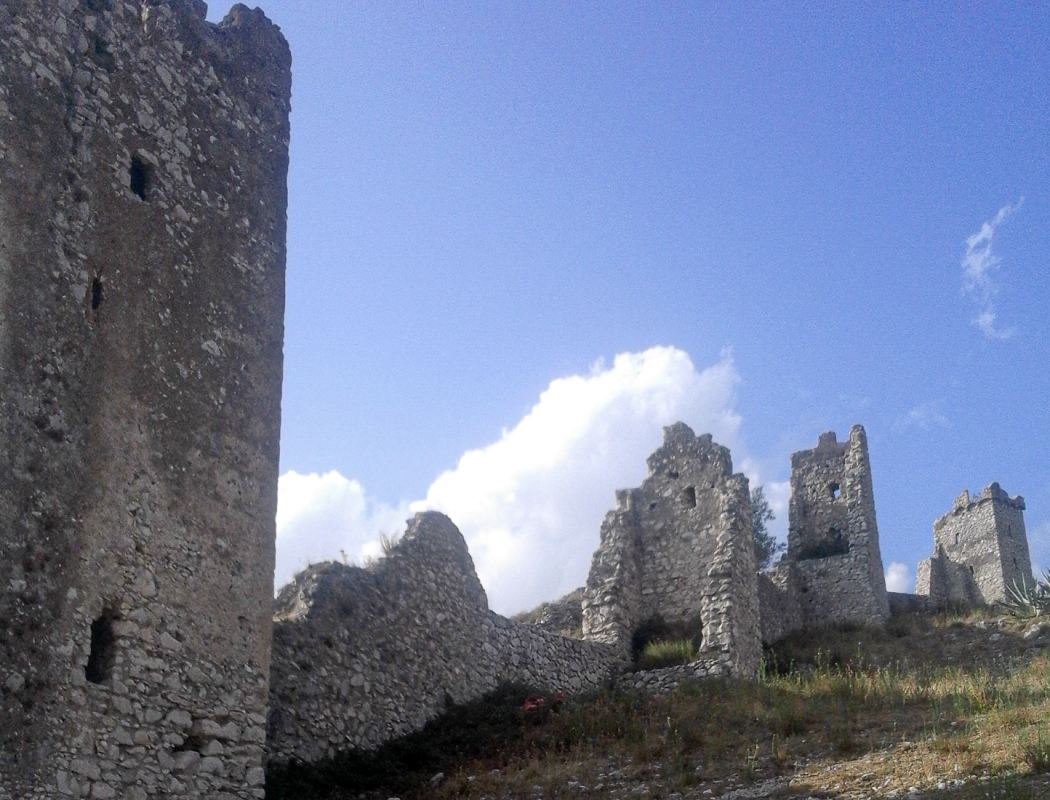
Other lords followed, such as the Del Balzos and the Orsinis. It was during the rule of the latter that two strong earthquakes occurred one after the other, in 1456 and 1466, which caused extensive damage to the fortress. From then on its slow, inexorable decline began, which the Spinellis, who took over possession of the fortress, tried to remedy in 1533 with a major restoration. A few decades later, when the 16th century was coming to an end, the fortress was converted into a prison, as well as the residence of the castellan on the upper floors of the tower and in the adjacent palace. Another disastrous geological event, the eruption of Vesuvius in 1631, marked the end of the castle's centuries-old history. A total spoliation followed, to use the materials collected on the rock in the construction of the new centre of Avella, further downstream.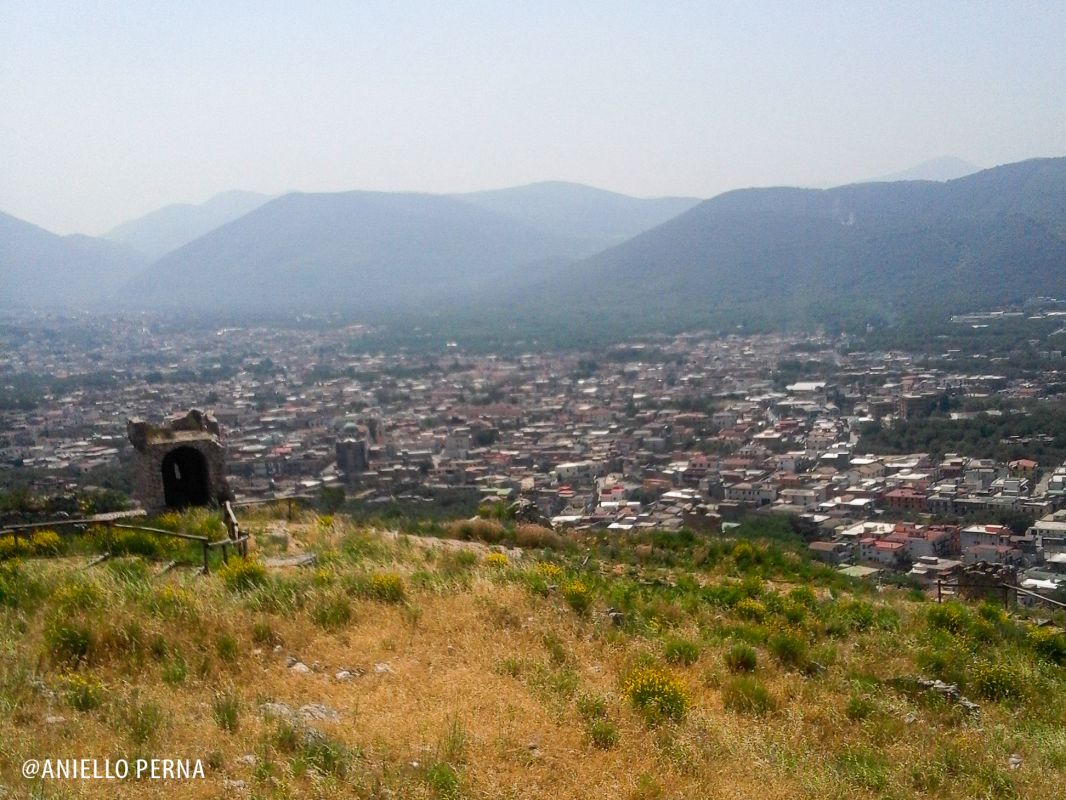
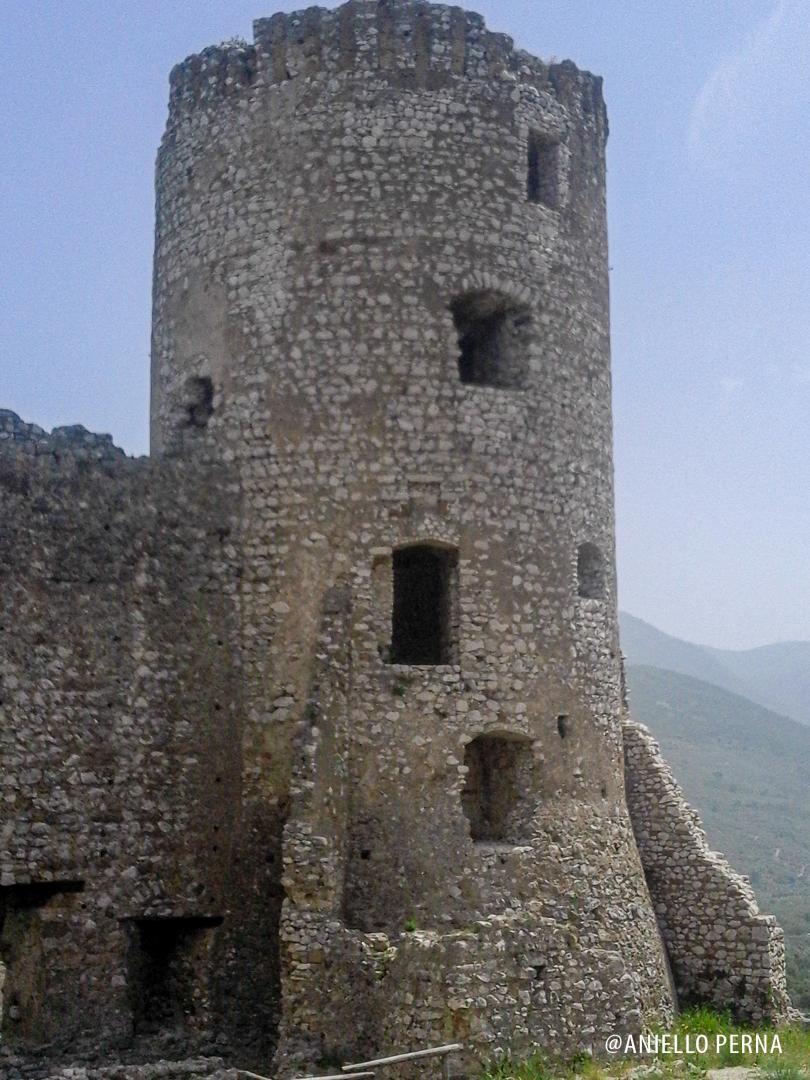 Since then, it is as if time has stopped among the ruins of the fortress, which still stand out on the top of the hill, clearly visible even from a considerable distance. Adverse geological events have spared only the structure of the circular tower of the keep, built with tuff stones and limestone rock. While of the village that developed at the foot of the tower, inside the internal courtyard, where in the period of maximum splendor there were around a hundred fires (i.e. resident families) and a parish church, only the rectangular structure of a large cistern remains above ground.
Since then, it is as if time has stopped among the ruins of the fortress, which still stand out on the top of the hill, clearly visible even from a considerable distance. Adverse geological events have spared only the structure of the circular tower of the keep, built with tuff stones and limestone rock. While of the village that developed at the foot of the tower, inside the internal courtyard, where in the period of maximum splendor there were around a hundred fires (i.e. resident families) and a parish church, only the rectangular structure of a large cistern remains above ground.
The two city walls, the Lombard and the Norman, remain visible and defined. The first, the oldest, includes ten semi-towers, one of which is included in the structure of the donjon. The second, dating back to the 12th and 13th centuries, still shows the south-eastern carriageway and the nine towers that characterized it, eight of which have a quadrangular plan, while the one located at the south-western end is pentagonal.
Of the original ruined structures, the only part that has been restored so far has been the one that was once used as stables. Yet, despite the fact that they are now ruins, the grandeur and majesty of the ancient fortress still attracts visitors who, after climbing to the top of the hill, are greeted by the charm of history and a panoramic vision of extraordinary beauty in whatever direction you look.
The ruins of the Avella castle are also associated with a unique archaeological find which is the Cippus Abellanus, a stone find from 150 BC. with some of the most significant inscriptions in the Oscan language that have come down to us. The plaque was found right in the castle area and used as a marble threshold in one of the houses in the new village of Avella. Rediscovered in 1745 and its enormous archaeological value recognized, it has since been the subject of analysis, evaluation and interpretation by eminent scholars, starting with Mommsen, and various research groups.
Info and reservations The visit to the Avella castle is part of a guided tour, with shuttle transfers, which also includes the amphitheater and the funerary mausoleums from the Roman era. The cumulative ticket is 5 euros, 2 with the Campania Artecard discount. Visits are by reservation on the occasion of exhibitions and events.

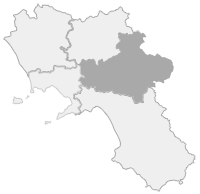


Comments powered by CComment